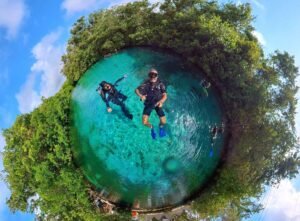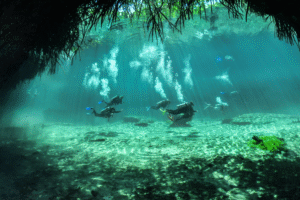If you’ve ever dived into one of Yucatán’s cenotes, you know it’s a truly unique experience. But did you know these underwater marvels are also home to some incredible wildlife? Let’s dive into the rich fauna that calls the cenotes home!
Aquatic Inhabitants
The cenotes of Yucatán are teeming with life beneath their crystal-clear waters. Small invertebrates like rotifers, copepods, and cladocerans are abundant and play a vital role in the food chain, serving as the primary food source for fish and other larger species. These tiny creatures may go unnoticed, but without them, the cenote ecosystem wouldn’t thrive.
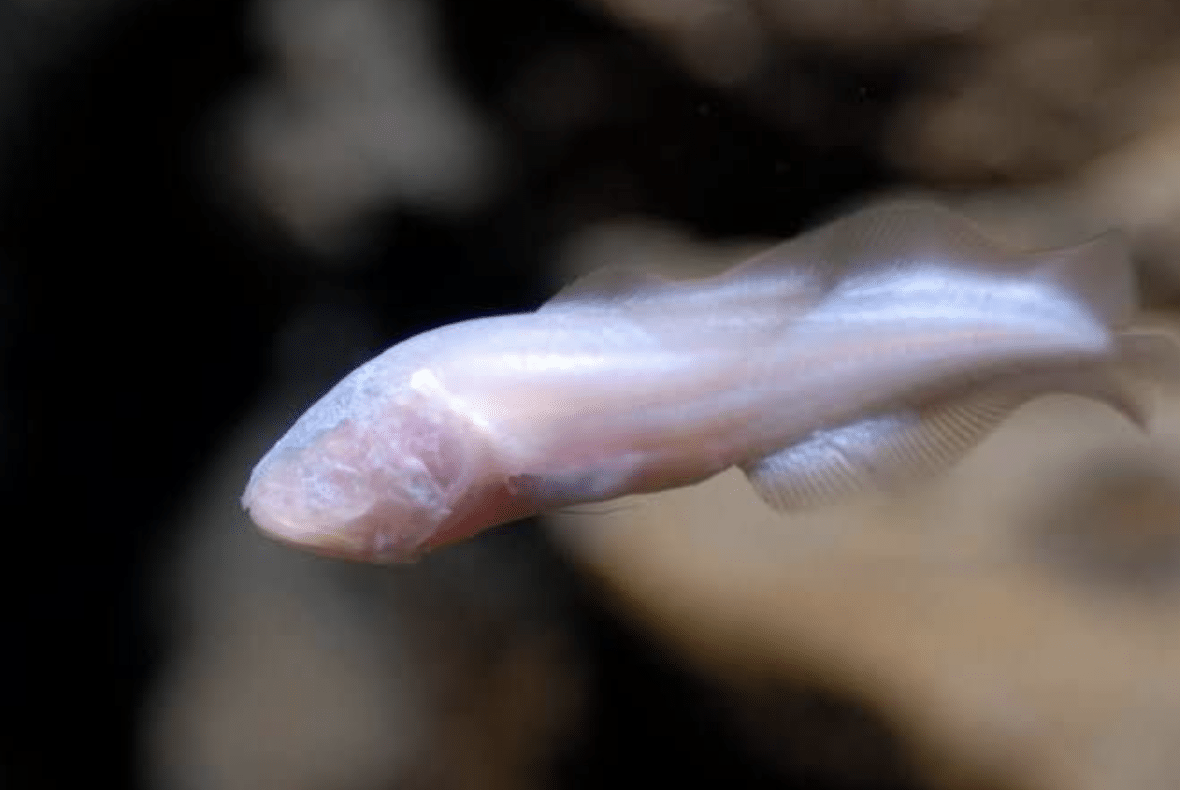
Fish are, of course, the most visible aquatic life in cenotes. Common species include mojarras, guppies, and catfish. In cenotes closer to the coast, you might even spot marine species like snappers and gobies, having found their way into these freshwater habitats through underwater tunnels. But what really sets some cenotes apart is their ability to host endemic species. Take, for example, the blind cave fish (Typhliasina pearsei) and the blind swamp eel (Ophisternon infernale). These remarkable creatures have adapted to the dark, isolated environment of the cenotes and have lost their ability to see, relying on other senses to navigate their world.
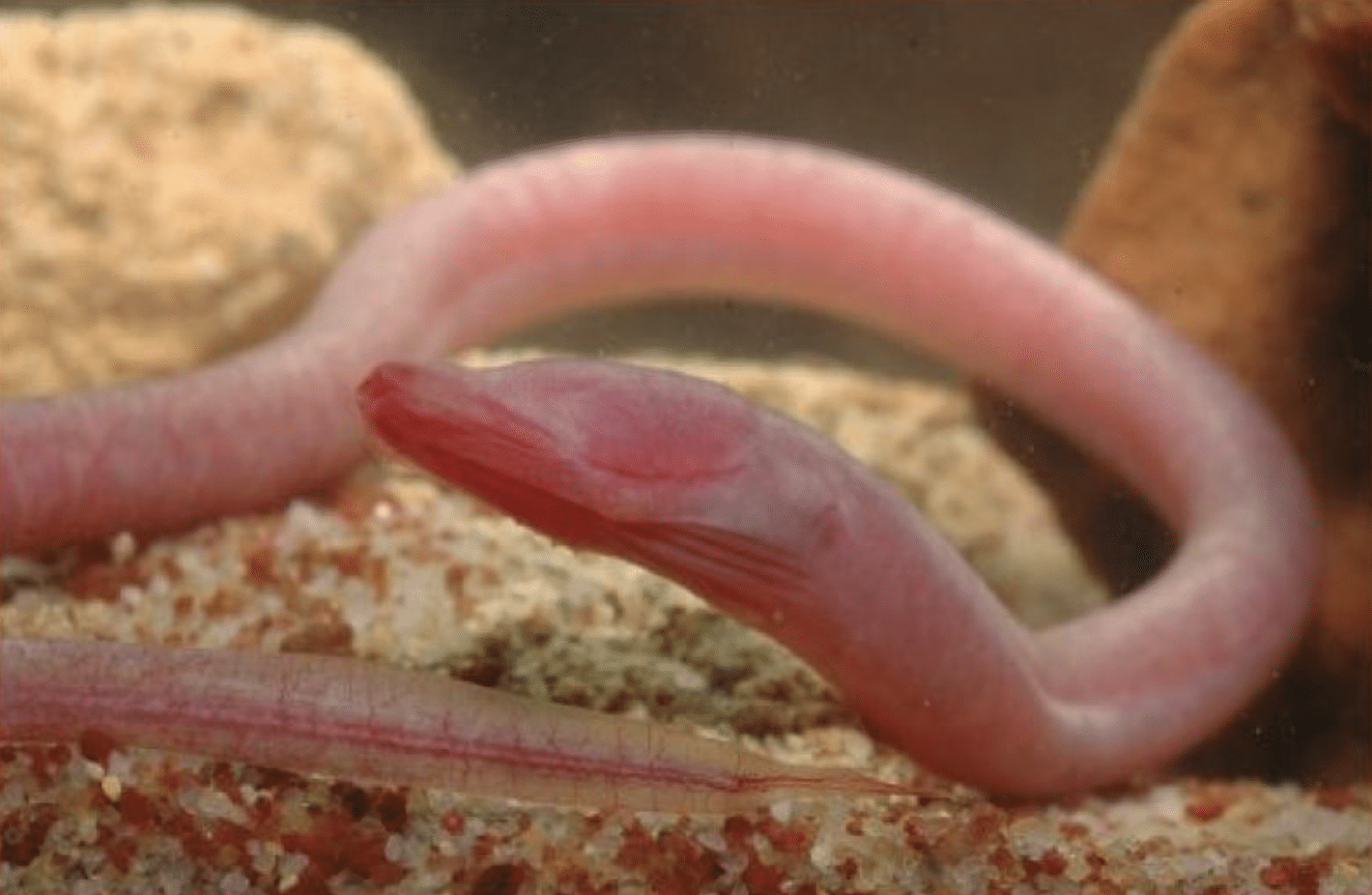
Land-Dwelling Creatures
While cenotes are known for their aquatic inhabitants, the surrounding land is just as full of life. Reptiles like iguanas and turtles can often be seen basking on the rocks near the water, soaking up the sun. The humid environment is also perfect for amphibians such as frogs and toads, who thrive in the moisture-rich atmosphere. Birds, particularly swallows, are frequent visitors. They nest along the walls of cenotes, taking advantage of the safe, sheltered environment. If you visit during the evening, you might spot bats flying in and out of the cenotes. These fascinating mammals are crucial to the ecosystem, helping with insect control and even pollination.
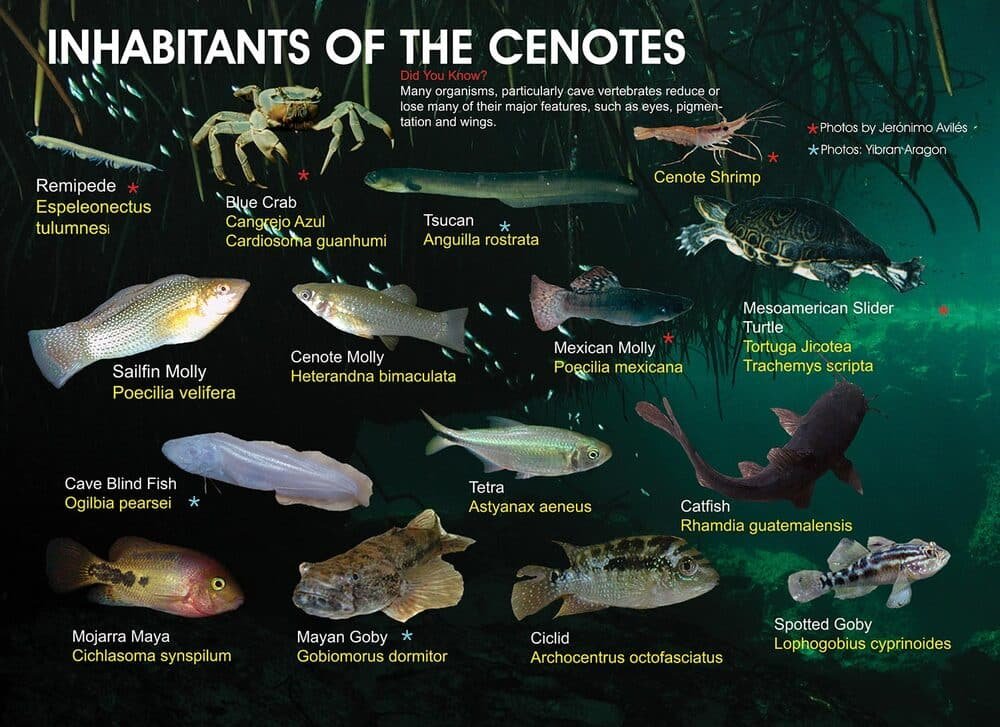
The Need for Conservation
Despite their beauty and importance, cenotes face significant threats. Pollution from nearby human activities, unregulated tourism, and habitat destruction are putting these fragile ecosystems at risk. Many species in the cenotes are either endangered or have very limited distributions, making conservation efforts essential for their survival.
Protecting cenotes means preserving the rich diversity of life they support. By safeguarding these habitats, we ensure that future generations can continue to enjoy the magic of the cenotes and all the incredible creatures that call them home.
Cenotes are more than just stunning places to dive; they are ecosystems that play a crucial role in the natural world. From the smallest invertebrates to the larger land mammals, these habitats are rich with life that continues to adapt to their unique environment. So next time you dive into a cenote, take a moment to appreciate the incredible fauna that lives within it. Every dive offers a glimpse into a world that few ever get to experience, and it’s up to all of us to help protect it.
